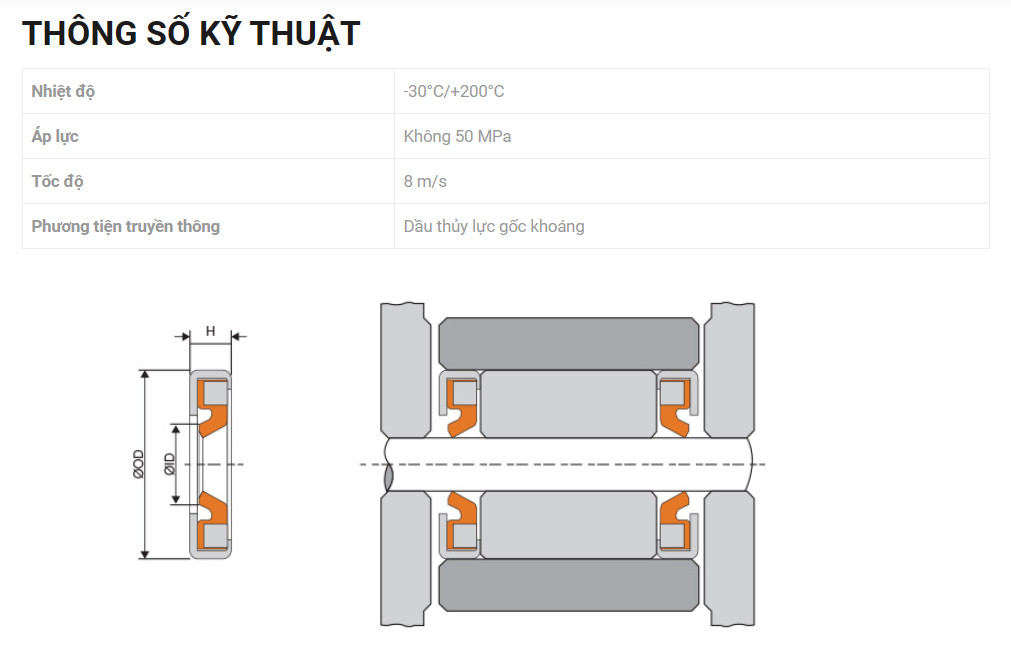- Home
-
About Us
- Products
- Industry
-
News
-
Contact Us
Description
Representation The VAY configuration is a dust stop consisting of a rubber seal lip and a metal cage. * Suitable for rotational and oscillating movements* Effective barrier against external pollution* Easy installation with solid foundation Application ExcavatorLink system Raw materials RubberFKM 70 – 75 Shore AHNBR 70 – 75 Shore ANBR 70 – 75 Shore AMMetal cageSteel – AISI 1010Stainless steel – AISI 304Stainless steel – AISI 316| Temperature | -30°C/+200°C |
| Pressure | None 50 MPa |
| Speed | 8 m/s |
| Medias | None Mineral hydraulic oils |

NBR
Nitrile rubber (NBR) is the general term for acrylonitrile-butadiene copolymer. The ACN content can vary between 18% and 50%. While the acrylonitrile content is important, the resistance to oil and fuel is more so. Conversely, the elasticity and compression set are not as good. The NBR has good mechanical properties and good wear resistance. However, its resistance to atmospheric agents and the ozone is relatively low.
| Chemical resistance | Aliphatic hydrocarbons (propane, butane, petroleum, diesel fuel) Mineral oils and greases Fire-resistant fluids (HFA, HFB and HFC) Diluted acids, low-temperature alkaline and saline solutions Water (up to +100°C max) |
|---|---|
| Compatibility issue | Fuels with high aromatic content Aromatic hydrocarbons (benzene) Chlorinated hydrocarbons (trichlorethylene) Polar solvents (ketone, acetone, acetic acid, ethylene-ester) Strong acids Glycol-based brake fluids Atmospheric and ozone agents |
| Temperature range | -25°C/+100°C |
FKM (Fluorinated Rubber)
Depending on their structure and fluorine content, the chemical resistance and resistance to the cold in fluororubbers can vary. This FKM-based rubber is very often used for high-temperature hydraulics and pneumatics, for industrial valves, injection/fuel systems, motor seals and high-vacuum systems.
| Chemical resistance | Mineral oils and greases, ASTM n°1, IRM 902 and IRM 903 oils. Fire-resistant liquids (HFD) Silicone oils and greases. Mineral and vegetable oils and greases. Aliphatic hydrocarbons (propane, butane, petroleum) Aromatic hydrocarbons (benzene, toluene) Chlorinated hydrocarbons (trichlorethylene) Fuel (including high alcohol content) Atmospheric and ozone agents |
| Compatibility issue | Glycol-based brake fluids. Ammonia gas. Organic acids with a low molecular weight (formic and acetic acids) |
| Temperature range | -20°C / +200°C (short-term peak at +230°C) -40°C / +200°C with particular FKMs |